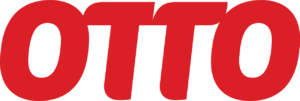Otto
Relax. Take a seat. Ride Shotgun have got this.
Ride Shotgun’s custom sofa CGI solutions sit well with The Otto Group
The Otto Group is one of the world’s biggest ecommerce companies. Based in Hamburg, Germany, they operate in more than twenty countries.
They approached Ride Shotgun’s CGI team to potentially add to their core base of content suppliers for an ever-growing catalogue of ecommerce sites. The vast amount of visual content required for their numerous retail brands means that an overview production framework must be adhered to by each CGI supplier.
EXPECTED
For this test project, the client was looking to utilise AR (Augmented Reality) as an extra sales tool for customers to visualise a range of sofas from the comfort of their own homes. Our task was to produce-accurate 3D sofas in multiple iterations of different materials, colours, orientations and sizes. Totalling in a whopping 3,000 AR model assets.
Already a big enough challenge, we then discovered that the only technical specifications provided were in the form of raw spreadsheet data, with no photography, RBG colours or product web links.
EXCEEDED
Our Dev team wrote a custom script that cleverly loaded the web page of each product in the spreadsheet by constructing it from the SKU data, downloading the JPEG colour swatch and sampling it to get the sRGB data. Then writing this back into our Google sheet for later reference. On review, the client decided that we couldn’t rely on the accuracy of their own web colour swatches, and so they wanted colour to be referenced from the product photography from their website.
To achieve this, we created another custom script to download the hero image from each product web page, this provided a facility to mimic Photoshop colour sampling to capture an average RGB colour which was automatically registered on the Google sheet.
Thanks to this custom process, what would have taken days in Photoshop, now took mere hours for users to sample and record the colour of 3000+ sofas, group them by fabric type and create base textures of these materials.
Our custom script allowed us to take the appropriate base model (from a range of 50+), orientate it, apply the correct fabric and colour and the generate a ‘low poly’ model to be exported to Android or Apple file formats. These were validated against technical criteria to produce a 3D render of the model.

This was then fed in our custom testing app, which cross-reference the render to product photography. A simple keypress enabled the user to approve or reject it, with everything automatically fully tracked on the spreadsheet.
Having successfully delivered on our maiden project for The Otto Group, look out for more CGI collaborations in 2023…
To find out more about our in house AR and interactive capabilities, check out our dedicated AR services page.

